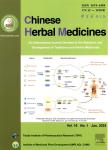Tsc1/Tsc2 complex: A molecular target of capsaicin for protection against testicular torsion induced injury in rats
Tsc1/Tsc2 complex: A molecular target of capsaicin for protection against testicular torsion induced injury in rats作者机构:Phytochemistry Research Center Shahid Beheshti University of Medical Sciences Tehran 19839-63U3 Iran Department of Chemistry Richardson College for the Environmental Science Complex The University of Winnipeg Winnipeg R3C 1X6 Canada Department of Pharmacognosy School of Pharmacy Shahid Beheshti University of Medical Sciences Tehran 19839-63113 Iran International Center for Chemical and Biological Sciences H.E.J. Research Institute of Chemistry University of Karachi Karachi 75270 Pakistan Reproductive Medicine Unit University of Schleswig-Holstein Luebeck 24105 Germany Department of Medicinal Chemistry Shaheed Beheshti School of Pharmacy Tehran J9839-63113 Iran Medical Plant Research Center Basic Health Sciences Institute Shahrekord University of Medical Sciences Shahrekord 14747-17531 Iran Department of Immunology School of Medicine Iran University of Medical Sciences Tehran 14496-14535 Iran
出 版 物:《Chinese Herbal Medicines》 (中草药(英文版))
年 卷 期:2019年第11卷第2期
页 面:216-221页
学科分类:1007[医学-药学(可授医学、理学学位)] 10[医学]
基 金:support by Phytochemistry Research Center Shahid Beheshti University of Medical Sciences Tehran Iran Grant No. 66005282
主 题:capsaicin cell survival molecular targets testicular torsion Tsc1/Tsc2 complex
摘 要:Objective: The detailed knowledge about protective effects of capsaicin(cap) and involved mechanisms against testicular torsion(TT) is still not available ***: Male Wistar rats were assigned into four major cohorts:(i) sham,(ii) TT,(iii) three subgroups subjected to TT and different doses of cap(100, 500, and 1000 μg/mL), and(iv) three subgroups of healthy animals subjected to various concentrations of cap. The animals were decapitated at 24 h after reperfusion, and the evaluation of protein expression was performed by Western blotting assay. At 72 h after reperfusion, apoptotic cell death and tissue injury were evaluated by TUNEL nuclear and H&E staining,***: The results showed that cap administration following TT significantly increased the expression of tuberous sclerosis proteins 1 and 2(Tsc1/Tsc2) in a dose-dependent manner(P 0.05). Cap decreased cell apoptosis at highest dose. Likewise, cap contributed to the preservation of tubular morphology and decreased tissue injury at the highest tested concentration(1000 μg/m L).Conclusion: Collectively, our findings demonstrate the validity of cap as a therapeutic agent against TT through targeting Tsc1/Tsc2 in a dose-dependent manner.



